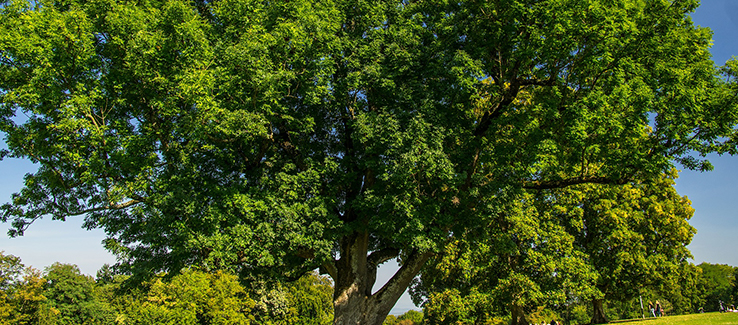Ash Trees – Why The Fraxinus Species Is Being Decimated
Avoid planting an ash tree that reaches monstrous dimensions, then suddenly dies, causing catastrophic damage when it falls. Knowing the incredibly fast and destructive plight of the Fraxinus species will help you make informed decisions when planting trees on your property.
fasttreeremovalatlanta.com gathered information on identifying problems with ash trees, emerald ash borer, and Fraxinus species identification.
What Is The Problem with Ash Trees
All of the ash species native to North America are susceptible to successful emerald ash borer (EAB) attacks due to their lack of tannins (plants and trees have tannins to make themselves unpalatable. Their purpose in nature is to deter animals and pests from feeding on or infesting them).
All North American native varieties of the Fraxinus species lack sufficient tannins to repel the deadly emerald ash borer, making them an easy target for this prolific menace. Some of these are:
- White Ash (Fraxinus americana)
- Green Ash (Fraxinus pennsylvanica)
- Black Ash (Fraxinus nigra)
- Blue Ash (Fraxinum quadrangulata)
- California Ash (Fraxinus dipetala)
- Gregg’s Ash (Fraxinus greggii)
- Pumpkin Ash (Fraxinus profunda)
- Velvet Ash (Fraxinus velutina)
Note: There are upwards of 20 North American native species and 65 species worldwide.
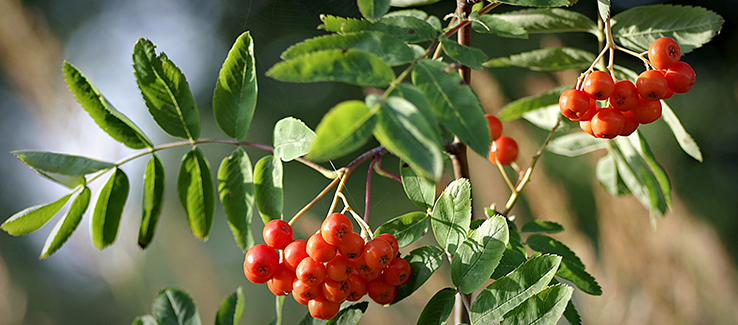
Is My Ash Tree Dangerous?
Yes. It certainly is dangerous if/when the following circumstances (or a combination of them) are present:
- There is an EAB infestation in or near your location
- Your tree has a confirmed EAB infestation
- Your region is in a state of drought
- Your ash tree has been weakened by disease
- Your ash tree has had previous insect infestations
Your ash tree is utterly defenseless against an emerald ash borer attack regardless of its health, age, or size. If/when an EAB infestation occurs, your tree will die. The borer’s activities severely interrupt the flow of water and nutrients from the tree’s canopy and roots, girdling the tree.
This “coup de grâce” delivered by the emerald ash borer translates to the ash tree dying within two to four years. Especially if your tree is under duress from other environmental factors, it’s important to take it down before it becomes dangerous to any nearby ash trees, neighbors, and the tree experts who will climb up to remove it.
The time it takes for your tree to dry out and start shedding limbs, branches, or completely destabilizing during severe weather depends significantly on its condition when infested. Your tree’s decline and death may occur exceptionally fast and should be closely monitored by an ISA-certified arborist until its removal.
Emerald Ash Borer Information
According to the US Department of Agriculture’s APHIS, the first US identification of emerald ash borer (Agrilus planipennis) was in southeastern Michigan in 2002. Since then, the Emerald Ash Borer has been responsible for decimating tens of millions of ash trees in 30 states. This beetle is native to Asia and likely arrived in the United States stowed away in wood packing materials.
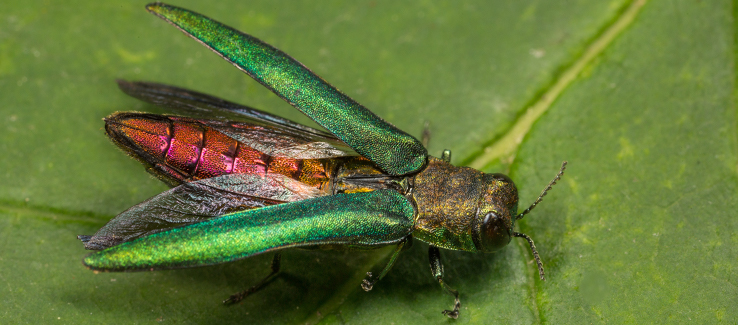
There are multiple treatment options that act as a control measure for the EAB, but they are not a cure. Because pesticide regulations may differ from state to state, home and business owners should contact their state department of agriculture, local extension office, or an ISA certified arborist for guidance.
Tip: Successful EAB control occurs before your tree is successfully attacked by the beetle. Once your tree is infested, it will likely be the host for multiple generations of EAB, lasting until and beyond the tree’s death.
During an infestation of this proportion, the source of the beetle’s threat or rapid proliferation may include:
- Transported Ash Wood Packing Material
- Ash Wood Debris, Trimmings, and Chips
- Transported Firewood
- Ash Wood Products
- Infested Ash Plantings and Trees
Note: These materials can inadvertently support and rapidly spread the infestation, even when no beetles are visible.
You can help in the fight against the emerald ash borer by contacting the Animal and Plant Health Inspection Service (APHIS) when you see an EAB or its damages to your ash tree:
Contact by Phone:
1-866-322-4512
Or complete and submit this form.
Tip: When possible, capture and place an adult in a container and freeze it, and any larvae you locate, place in a container with rubbing alcohol to preserve the specimen and help with positive identification. Visit the following link for further information on tree boring insects.
How Do You Identify an Ash (Fraxinus) Tree?
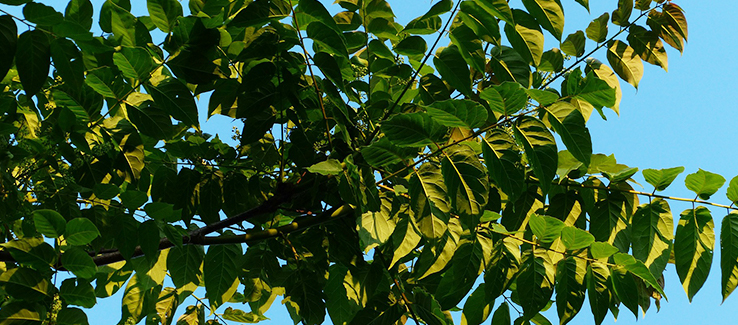
If you are unsure about your tree’s species, here is how to identify trees from the Fraxinus or ash species:
Ash trees typically have an opposite leaf pattern (leaves, buds, and stems are symmetrically located directly across from each other). Ash leaves are compound and will normally consist of 5-11 leaflets. When seed crops are present, they appear paddle-shaped and in clusters that remain on the tree through late fall or early winter.
How Do You Identify an EAB Infestation?
Signs and Symptoms of an EAB infestation include:
- Severe and Rapid Canopy Thinning
- Branch Dieback
- Tree Suckers Sprouting from the Tree’s Base
- Bark Splitting
- Zigzag Shaped Tunnels under the Bark
- D-shaped 1/8-inch Exit Holes
- Bark Damage and Stripping from Woodpecker and Squirrel Activity
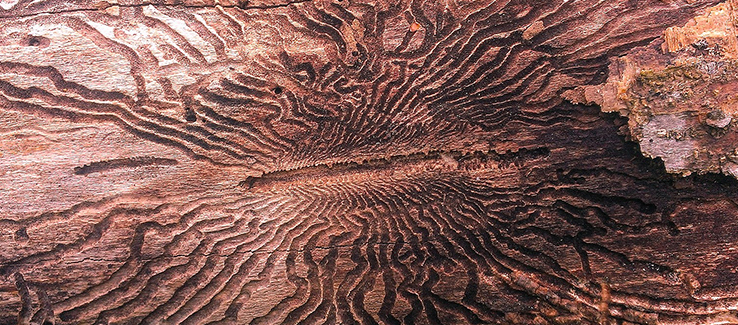
Note: Thinning and dieback are fast-moving symptoms of an infestation that typically begin appearing in the top of the tree’s canopy.
Tip: Anytime any of the above symptoms are detected, seek immediate professional help to begin mitigating the dangers your tree now poses.
Why Are Ash Trees Dying?
In this article, you discovered how to identify ash tree problems, how to identify the presence of the emerald ash borer, and how to confirm that your tree is of the Fraxinus species.
Your ability to quickly identify your tree’s species and what trouble it is having will help you prevent catastrophic property and personal injuries when it suddenly dies and collapses.
Ignoring the signs of an EAB infestation will lead to the death of your ash tree, causing extreme damages and injuries when it falls. You may also be fueling an infestation already making its way from coast to coast.
Sources:
nfs.unl.edu/eab-faq
aphis.usda.gov/aphis/resources/pests-diseases/hungry-pests/the-threat/emerald-ash-borer/emerald-ash-borer-beetle
ncforestservice.gov/forest_health/pdf/NC_ash_identification_brochure.pdf
(404) 220-9965
(404) 220-9963

